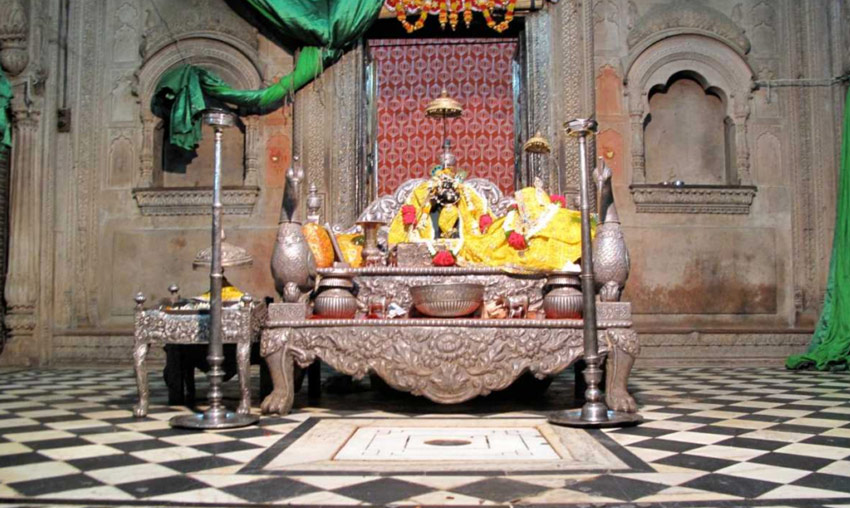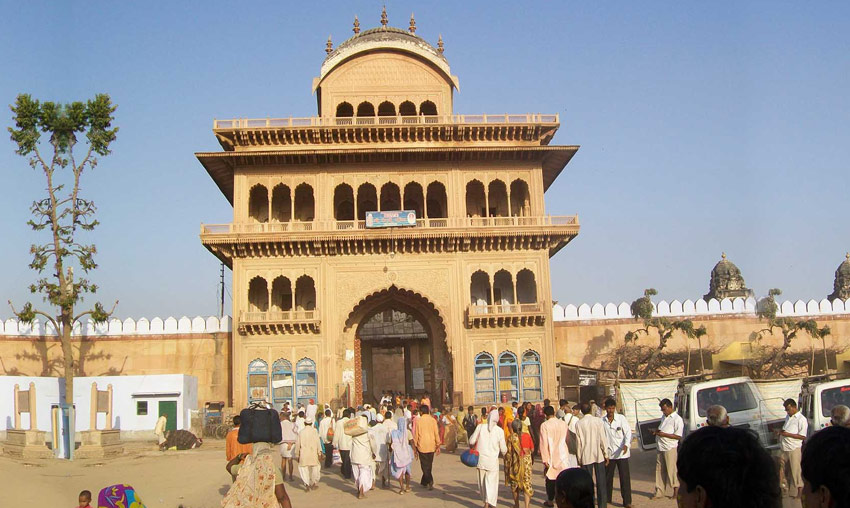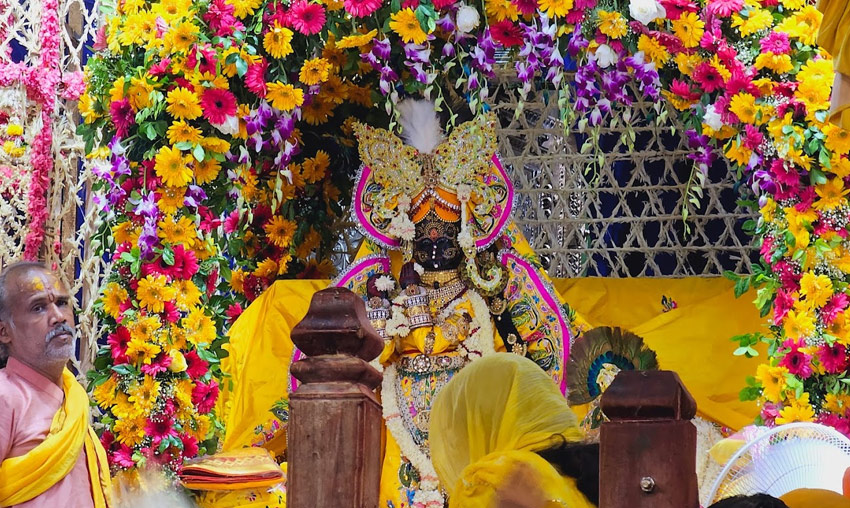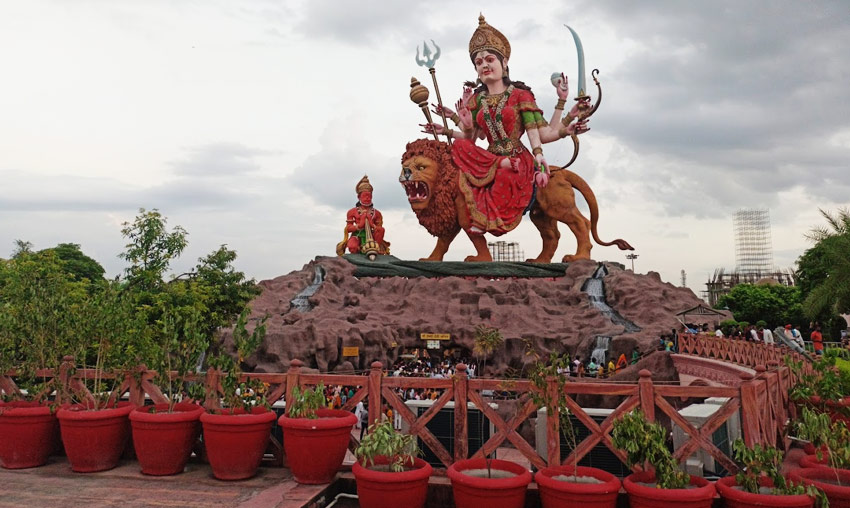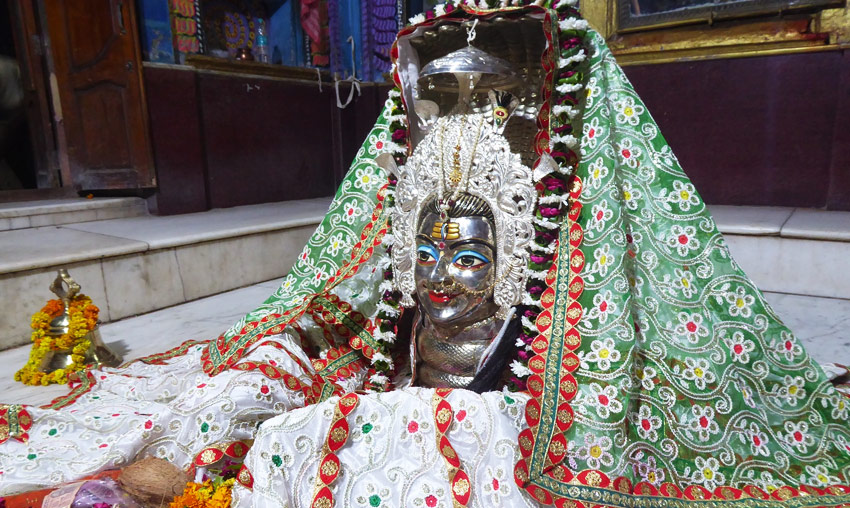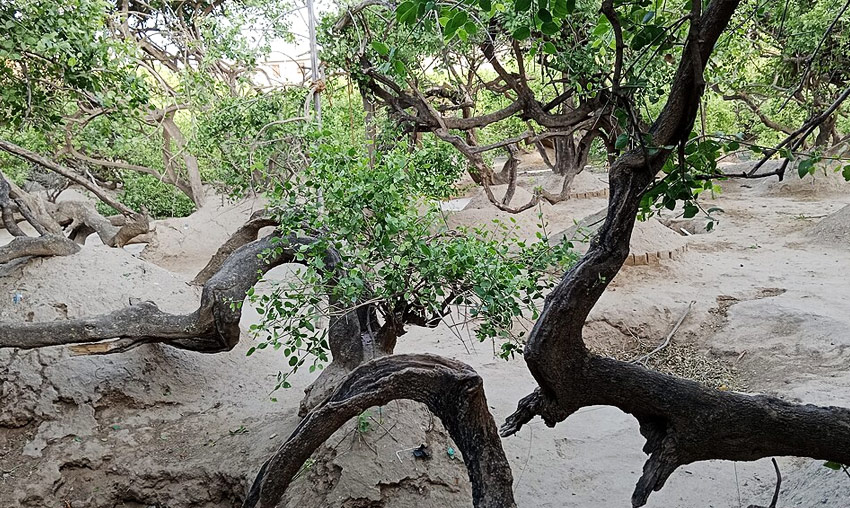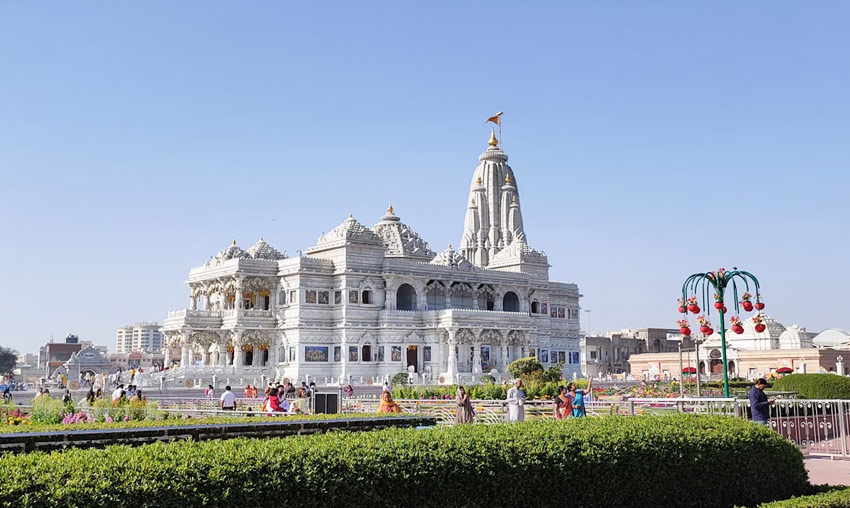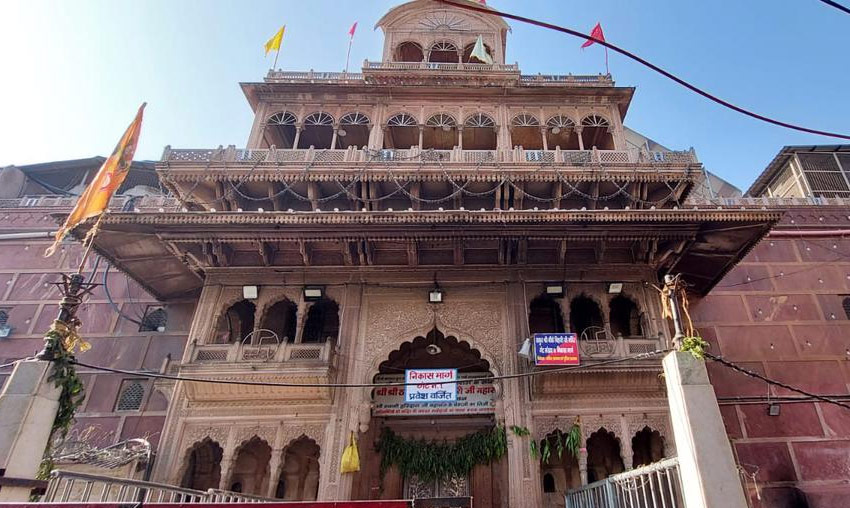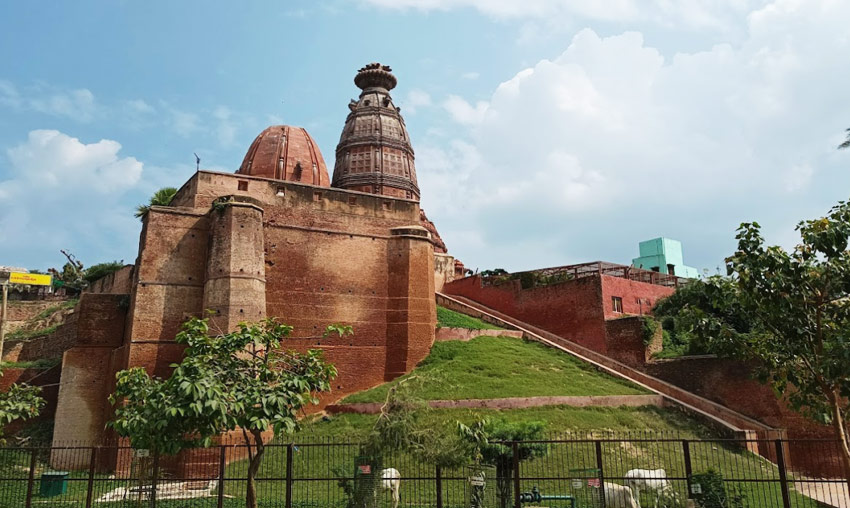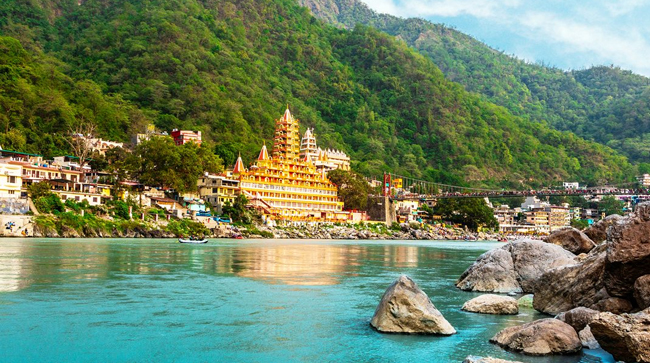Radha Raman Temple, Vrindavan Overview
Get the Information about Timings, History, Images of Radha Raman Temple, Vrindavan.
The Radha Raman Temple, one of the most revered early modern Hindu temples in Vrindavan, is situated roughly two kilometers from the Vrindavan Railway Station. The object of devotion is Lord Krishna, who is revered as Radha Raman, or the one who pleases Radha. Alongside Radharani, the self-manifested deity from Shaligram Shila with a mysterious smile on his face, the temple is said to house the original Shaligram deity of Krishna. Adjacent to Radha Raman’s place of manifestation, in the Radha Raman temple complex, is the samadhi of Gopal Bhatta.
Of the seven temples dedicated to Thakur of Vrindavan, the Radha Raman Temple is regarded as one of the most important. It is very significant to Gaudiya Vaishnavism adherents. When the temple was first constructed in 1542, it was exquisitely designed; however, Shah Behari Lallji restored it in 1826. The fact that this temple lacks a statue of Radha Rani despite being named for and dedicated to Radha is another intriguing aspect about it. The only object Krishna has next to her to indicate her presence is a crown.
Must See: Places to visit in Vrindavan
Legend of Radha Raman Temple
Establishing the temple 500 years ago was Gopala Bhatta Swami’s idea. At the age of thirty, he arrived in Vrindavan. After the absence of Chaitanya Mahaprabhu, he felt distant from the Lord. Consequently, he dreamed that the Lord told him to go to Nepal to obtain his darshana. After traveling to Nepal, Gopala Bhatta Swami had a bath in the fabled Kali Gandaki River. However, when he submerged his pot in the water, numerous Shaligrams got within. They refused to leave the pot, even when he attempted to dump them back into the river. He carried with him the twelve Shaligram Shilas he had found.
He worshipped them on the day of Poornima, placed them in a wicker basket, and then retired to rest. When he opened them the following morning, he discovered that there were just eleven Shilas and a flute-playing Lord Krishna idol. Essentially, it was one of the Shilas that had transformed into Radha Raman, a goddess through self-manifestation. This temple tells the tale of Radha Raman’s appearance and the location of the original Shila.
Activities at Radha Raman Temple
The temple engages in a variety of activities, such as garbage disposal and street cleaning, Go Puja, or ceremonies held to worship the holy cow, Love Braj, a tour guide service that offers you the authentic Braj experience, a number of youth programs, and Dental Charity, an initiative started by the management to guarantee that the people of Braj receive high-quality dental care and treatments.
Festivals Celebrated at Radha Raman Temple
Rama Navami: Celebrated to mark the day of Lord Ramachandra, also known as Brahmotsava, it falls in the month of Chaitra, which is March or April.
Chandan Yatra: In order to offer relief from the relentless heat during the summer months of May and June, the deity of Radha Raman is entirely covered in Chandan, or sandalwood paste. For roughly 21 days, the procedure is repeated with smaller deities as well.
Jhulan Yatra: During the start of the rainy season, the little deities are positioned on a solid teakwood and gold-plated swing in the temple courtyard as part of the Jhulan Yatra swing festival.
Balaram Purnima: A celebration commemorating the appearance of Lord Balaram, held at the conclusion of the month of Sharavan.
Janmashtami: This is the day when people celebrate Lord Krishna’s birthday all day long. Thousands of visitors come to the ornately decked shrine to receive darshan. The Maha Abhishek of Sri Krishna is completed before midnight, and is followed by an aratika and a bhoga offering.
Radhashtami: This festival commemorates the day that Radha was born. The day consists of a feast, Abhishek, and a half-day fast.
Kartika: During the month of Kartik, followers recite the praises of the Lord’s Kartik pastimes while offering lamps to the gods in the evenings. Kartika is the month when Diwali, Govardhan Puja, and Vraja Mandala Parikrama are held.
Gaura Purnima: A celebration honoring Chaitanya Mahaprabhu’s arrival. Until the moonrise, devotees fast. In addition, this is the penultimate day of Vrindavan’s Holi celebrations.
How To Reach Radha Raman Temple
The Radha Raman Temple can be reached via local transportation, including as buses and auto rickshaws, from its location in Rajpur Bangar’s Chamunda Colony in Vrindavan. Compared to the other options, renting a private automobile for the day is more convenient but also more expensive. The Radha Raman Temple is a good place for visitors to Vrindavan to begin their temple-hopping adventure, as it is just 2 kilometers from the railway station.
